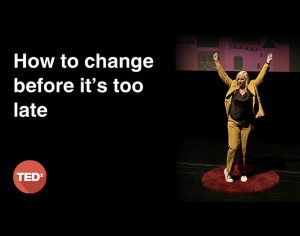In today’s digital age, we know that expectations of both consumers and employees are higher than ever. With organisations offering flexible working, abroad travel incentives, and fun office environments, the competition to stay ahead is no longer just in the products or services that you offer, but in the employee benefits that you boast to attract top tier talent. Getting people through the door is only stage one; many employers fail to see past offering perks and rarely invest in the long-term drivers of employees.
Just as it is with customers, if the team experience of your business isn’t seamless and value adding, employees will look for better alternatives.
Although the logic is simple, many companies don’t realise the importance of happy staff – employees who don’t like their organisation’s culture are in fact 24% more likely to quit.
So why don’t more companies spend the same time, if not more, investing in the experience of their employees than they do of their consumers? Before understanding why it is so important – it is crucial to understand what this concept entails. It’s not just creating a friendly office, the devil is in the details. It’s the premium coffee in the kitchen, the inviting break out spaces, the up to date technology and the wealth of support on offer.
If you’re building out or revamping your employee experience strategy, or want to better understand the impact good employee experience can have on your bottom line, it’s important to understand everything that entails to form a well-rounded approach.
What is employee experience?
Employee experience refers to everything an employee is exposed to over the course of their employment at a company: from the application process to interview, development and leadership and eventually offboarding – the entire employee lifestyle needs to be carefully executed.
According to author Jacob Morgan, there are three components that make up employee experience: culture, technological, and physical environment.
The cultural: how employees feel when they’re inside an organisation, which is impacted by …the organizational structure, leadership style, compensation and benefits, etc.
The technological: the overall experience …the tools an employee needs to do their jobs, including the user interface, mobile devices, and desktop computers.
The physical: refers to the work space …anything that can be seen, heard, touched, and tasted like desks, chairs, art, and meals.
Why does employee experience matter?
So why must businesses spend as much time on the employee experience as they do on the customer experience. The answer is simple, happy people = happy clients.
Just as businesses focus on customer experience as a way to retain and attract new business, it makes sense to do the same inwardly. As reported by Harvard Business Review companies that excel at customer experience have one-and-and-half times as many engaged employees as customer experience laggards do.
More engaged employees means a happier working environment, attracting top talent, more brand loyalty and ultimately a thriving business.
Offering a great employee experience also creates a competitive advantage as the war for talent in many sectors continues to rise. It’s not just your customers who will shop around – according to Hays, 81% of employees would consider leaving their current job if the right offer comes along. Regardless of the pandemic leaving people in difficult working situations, talented employees will always be picky about where they choose to work. The best in the talent pool can afford to be choosy, so make sure that your company stands out for the right reasons.
At SmartPA, we believe that our people are our greatest asset and the beating heart of our business. For us, happy employees are vital as they relay that positivity to our clients, ensuring excellent customer service.
When employees feel valued and their contributions to company success are recognised, they are much more productive and take more pride in the work they produce as they deeply care for the company. Employees who are invested both physically and mentally in a business will definitely have a positive impact on business results – trust me!
How to create a better employee experience?
So, what can you do to create a better employee experience – especially in these times when the office is still very disconnected and remote working continues to dominate. It’s easy to dismiss the importance of EX in times of crisis as you naturally put your customers first as they directly impact the bottom line. However, hard lessons learned from recessions have shown that it’s the commitment and dedication of employees that will carry a business through difficult times.
Although aesthetic and wholesome perks work well when portraying a great experience via social media, your efforts don’t need to include an in-house yoga studio and free smoothies on tap. Maintaining an individual’s wellbeing can be as simple as understanding their need for flexibility to support a young family or as comprehensive as a wellbeing manager who oversees each individual’s personalised plan to be their best self every single day.
Good wellbeing practice in the office requires a few things to ensure it is taken seriously; emotional intelligence and a top-down adoption model. The former is important to ensure you are tuned into the individual needs of your team; one may need a run at lunchtime to destress before an afternoon meeting, another may need a short meditation session mid-afternoon to stay focussed and calm on service or sales calls. The latter is crucial to remove any fear of stigma or judgement from junior members of staff. If the C-suite are encouraged to design routines and patterns that benefit their wellbeing, then the rest of the team will soon follow suit without any hesitation. Everyone is different, so there is no ‘one size fits all’ model.
For the employees reading, if you are lucky enough to work for an employer that recognises the importance of your wellbeing, respect that and never take advantage. Wellbeing is designed to put you in the best frame of mind and self possible, not to give you extra long lunches or an excuse for an afternoon nap.
Some suggestions on wellbeing activities for your office:
- Yoga & meditation sessions
- Team-building activities
- Quiet space in the office
- Health-based challenges
- Charity cycles
- 10K step competitions
- Friday fun afternoons
- Quizzes
- Drinks
- Free fruit & healthy snacks
- Gym membership allowance
- Employee benefit programme
- Flexible/remote working options
- Walking meetings
- Coaching programmes
- Onsite childcare
At SmartPA, we try and mix things up. From inter-departmental quizzes to lunchtime yoga, treasure hunts to Friday fizz, we like to introduce and trial different things to keep life fresh and make sure our approach to wellness suits all different types of people. There is no accounting for the nuances and preferences of human nature, so we try and be equally as flexible. My top tip to employers is to be open-minded. Things that may seem odd can bring out the best in people; a walking meeting may seem a bit millennial but try it – you’ll be surprised at the new ideas that flow as a benefit of the fresh air and endorphins.
It’s a no brainer – invest in your people and they will invest in the success of your business!
“
Share via:


















































